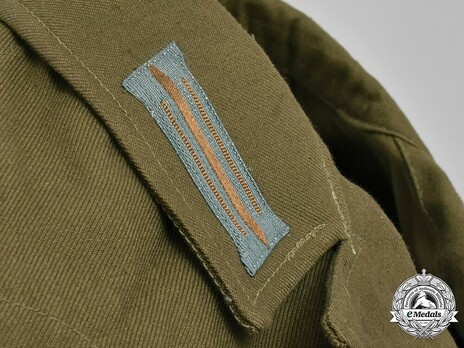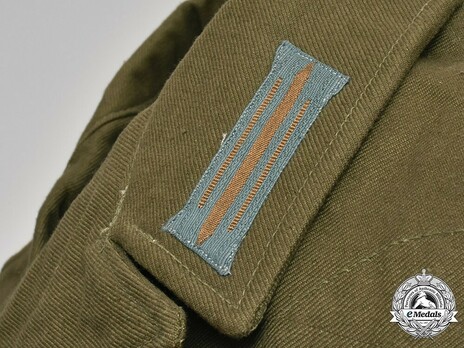Afrikakorps Heer NCO/EM Collar Tabs
SKU: 23.GOR.03.02.03.001
Estimated market value:


Estimated market value:
Attributes
History
During the Second World War, German troops stationed in northern Africa are generally referred to as the Afrikakorps. Technically, this is not entirely correct, since some German units operating in Africa were not actually part of the DAK (Deutsches Afrikakorps), and some units of it were, in fact, Italian ones. However, for the purpose of collecting so-called “tropical” uniforms and insignia, collectors have simplified the meaning of the term.
The first German troops were sent to northern Africa in February of 1941, to support their Italian allies against the British. The climate of the African continent made it necessary to wear specialised uniforms and gear that not only supported the soldiers in serving in a hot and arid environment, but also helped them in blending in with the landscape, which, in general, presented itself as brown, olive, khaki, or sand/tan in colour. Worn over long periods of time under the blistering desert sun, some uniforms were eventually bleached to white or off-white. Uniforms and insignia in these colours are often referred to as “tropical”, and it is worth noting that they weren’t just worn by members of units stationed in Africa, but in the entire Mediterranean theatre of war, including southern France, Italy, the Balkans, and Greece, as well as in southern Russia during the summer months. Tropical uniforms were worn by members of all three branches of the Wehrmacht: the Heer (army), the Kriegsmarine (navy), and the Luftwaffe (air force). Members of the Waffen-SS stationed in southerly regions also wore tropical-style uniforms, and even though they technically have no connection to the DAK, all tropical uniforms and insignia of all branches of the German military are listed here.
Two collar tabs or patches were worn by all soldiers on their uniforms in matching, mirrored pairs.
Ranks below General ranks show two so-called “Litzen”, which translates to cord, braid, or lace, on their tabs.
Collar tabs can differ significantly in background colour, design, and quality due to production processes.
Company and Field Grade Officers wore dark blue-green tabs with embroidered double “Litzen” (braids), with the center stripes in the wearer’s branch colour.
In contrast to the ones worn by Enlisted Men and NCOs these “Litzen” have a separated, more pronounced “chapel”, which is the part shaped like a base of a column at each end of a “Litze”. These are also the reason why this type of “Litze” is known as “Kapellenlitze” (chapel Litze).
An effort to standardise collar tabs further was made on November 26, 1938 with the introduction of the “Einheitslitze” (standard Litze). It has a space between the “Litzen”, and the centre stripes are in dark blue-green and no longer in branch colour.
On May 9, 1940 a second pattern was introduced. It has a space between the “Litzen”, and the centre stripes are in mouse-grey. This version was sometimes sewn onto the uniform directly, without the backing in dark blue-green.
In contrast to Enlisted Men, NCOs have special braiding in the form of fine criss-crossing lines on the collar of the uniform.
Tropical uniforms were completed with tabs showing blue-grey “Litzen” with brown centre stripes and a centre space between them. These were sewn directly onto the uniform without a backing tab.
Army soldiers holding ranks above NCO/EM ranks, that is Officers and Generals, wore their standard collar tabs and had no specific tropical tabs. Officers are known to sometimes wear the NCO/EM tropical tabs instead.


Comments
Sign in to comment and reply.


Scroll Top